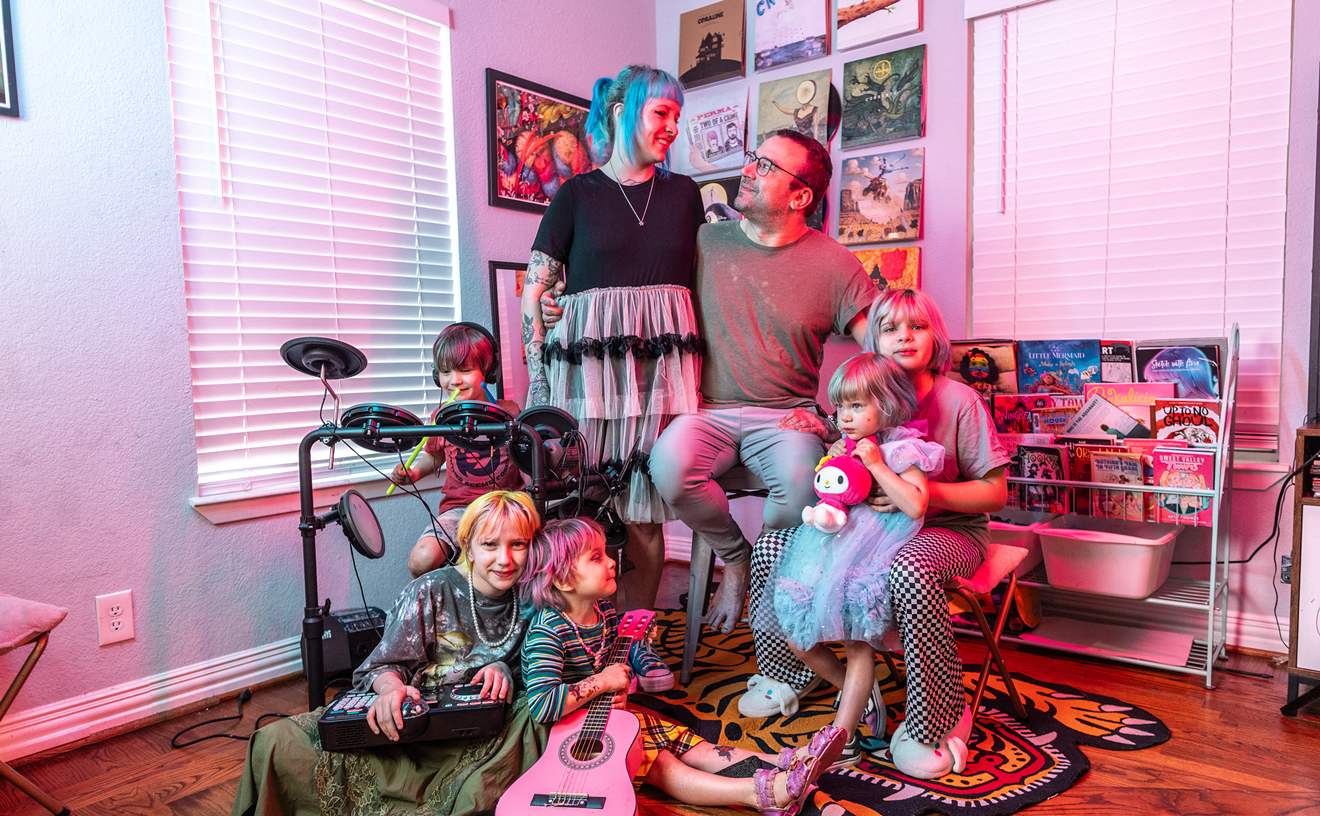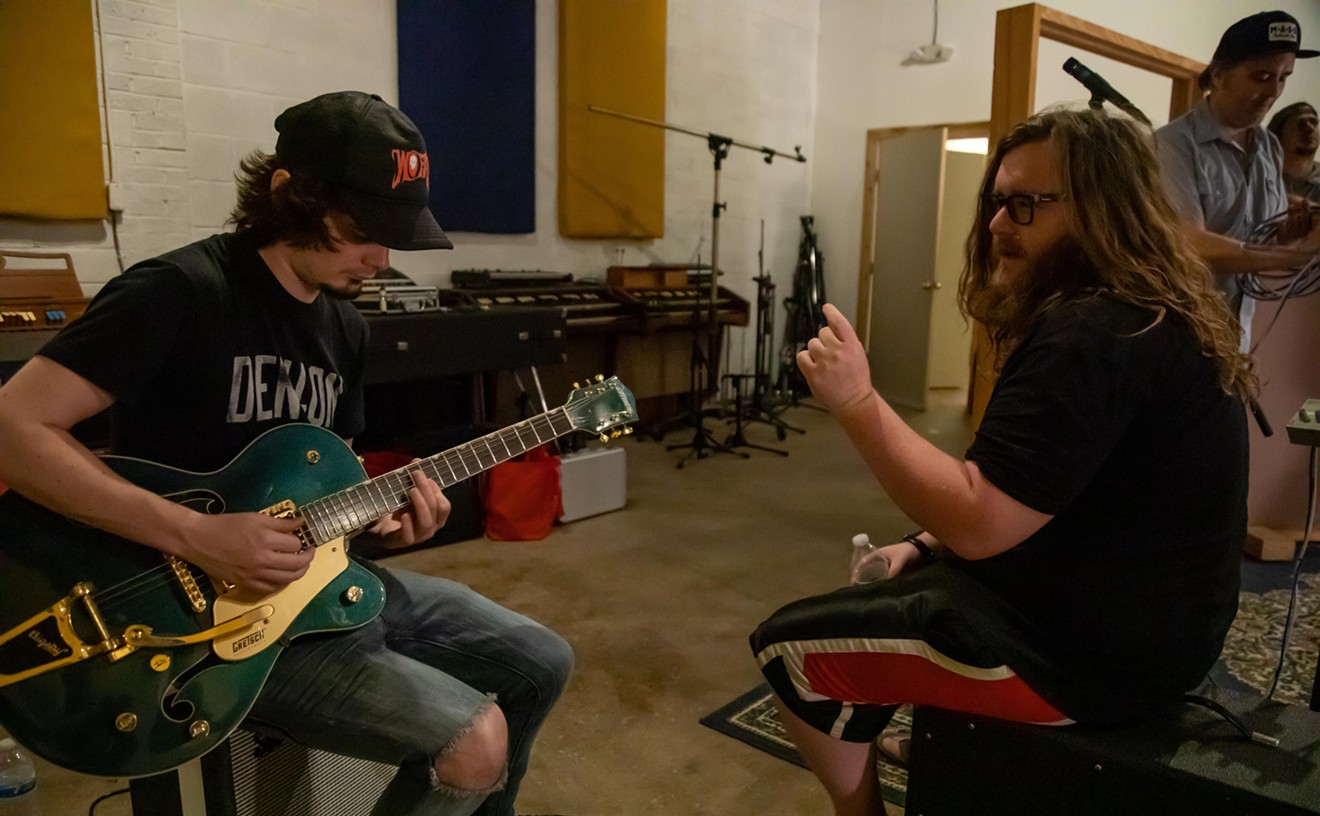In the end it's not Joe's talent that saves him. It never is, in the most uniquely American folktales; when you roll with the Big Gambler the dice are always weighted, and talent alone wins you nothing. Only a quick combination of ingenuity and insane risk allows Joe to slip through his opponent's grasp. Following his razor-close escape, Joe stands exhilarated and shaken on the streets of the little town in which he was born. He considers his options, finally musing upon the cracked road beneath him: Then he turned and headed straight for home, writes Leiber, but he took the long way, around the world.
Leiber published that story in 1967, the same year Bob Dylan slipped out of the public eye at the beginning of what was to become a six-year hiatus from touring. Dylan left the road following his May 27, 1966, Royal Albert Hall performance, at the bloody bottom-end of a tour that had become a nightly cross between a public flogging and a mortar attack. The rare occasions on which he played live between 1967 and '73 were mostly brief, special-appearance showcases, like George Harrison's Concert for Bangladesh, or the Band's December 1971 residency at the New York Academy of Music. By the time he came back in 1974, everyone else had picked up on what he'd done; the boos gave way to praise.
We forget a lot of things over the years. Once upon a time, to see Dylan perform live was to see history being made, to hear a young man push the limits of what American music could do and say and accomplish. But it's impossible to perform forever at such a white-heat pace and remain whole; and despite his occasional extended flirtations with self-destruction, the one instinct Dylan always seemed to possess, in unlimited supply, was self-preservation.
Often he indulged that instinct at his audience's expense, and it frequently showed in how much of himself he seemed to be investing in his live performances. In recent years, the overall quality of Dylan's performance on any given tour has been so irregular that the terms of debate, perhaps without our realizing it, ossified into a series of rote questions: Is he engaged or indifferent? Articulate or incomprehensible? Are the arrangements recognizable, or does it take a few verses to identify each song? Is he playing older stuff, or is he holding the line at his most recent handful of albums? Over roughly the last decade and a half, assessing the latest Dylan tour in a handful of words became such a mannered pastime that even the most casual listeners felt confident joining in the trainspotting. Like I said, we forget.
But Love and Theft, released (as we will never be able to forget) on September 11, 2001, changed the vocabulary of the larger discussion. Over repeated listenings, Love and Theft reveals itself to be the album for which Dylan had been rehearsing ever since he'd stripped all his influences down to their very bones on 1992's Good As I Been to You. Appropriating, robbing, updating, unraveling and reweaving the entire history of 20th-century American music, the album's very title lays bare the two most dominant methods in Dylan's own artistry.
It's an auspicious record, to be sure. And for the first time in many years, Dylan's live show turns out to be not only strong support for its source album, but a stunning piece of art all by itself. The brilliance--there is simply no other, more appropriate word--of Dylan's Love and Theft touring show doesn't answer any hoary questions concerning Good Bob vs. Bad Bob. It negates those questions, cancels them out to zero, burns them down and blows them away like the ashes of the Manchester Free Trade Hall in 1966.
Where that show saw a very young Dylan spitting folk's snobbish elitism and rock's complacent triviality back into his audience's faces, the current tour finds the elder statesman calling up the ghosts of America's musical past and conversing with them--even, at times, embodying them--in the service of establishing our common tradition. And at no time in Dylan's career has it been more evident that his music is, emphatically, our music, as well.
The shows open with a traditional bluegrass, postwar blues or gospel number; recent nights have featured Ralph Stanley's "I Am the Man, Thomas" or "Duncan and Brady (Been on the Job Too Long)" in the leadoff position. The rest of the evening, nearly three hours on some occasions, is a grab bag pulled from Dylan's own songbook, from The Freewheelin' Bob Dylan to Love and Theft, collecting 30 years of music.
The set list has rotated a fair amount, but audiences for the current Southern leg of the tour have been regularly treated to "Like a Rolling Stone," "Tangled Up in Blue," "Rainy Day Women #12 and #35," and, in a somewhat surprising choice repeated at several shows, "John Brown," "Masters of War" and "Hard Rain." A semi-regular encore selection has been a blistering version of "All Along the Watchtower," featuring Charlie Sexton on ferocious slide guitar.
Rapidly moving through electric workouts, acoustic blues, Appalachian reels and Joplin-esque popular melodies, the show takes the elements that went into his last album and lays them bare, in the process drawing new connections with his entire body of work. "It's All Right Ma (I'm Only Bleeding)" segues into the old shoutin' gospel tune "This World Can't Stand Long" without a stutter. It's like seeing the golden cord connecting all those songs together, for the first time.
Yet the technical and visual elements of the Love and Theft show are perhaps its crowning achievement, the reason this tour represents so much more than great songs impeccably performed. Dylan's live show hasn't been mixed this well in more years than many of us can recall. The vocals--and he's in excellent voice--are consistently full-forward in the mix, but subtle shifts in each instrument's emphasis display each song in what sounds like their purest light. Larry Taylor's banjo on "High Water Everywhere (for Charley Patton)" rings like gold, as the knife-twist lines, "You're dancin' with whom they tell you to/Or you don't dance at all/It's tough out there," float atop his rills like hickory branches on floodwater.
The setup and lighting run the gamut from Grand Ole Opry staging to ominous vaudeville-hall darkness--entirely appropriate, given the many musical forms on display. On "Tell Me That It Isn't True," the group remains in a tight formation under a few spots, letting the gentle force of the song carry its power. Ripping into "Summer Days," the band leaps to its feet and the lights whip through the crowd (encouraging a brief eruption of actual swing dancing at the Charleston, West Virginia, show, which is, I'm almost certain, a first).
Throughout a chilling reading of "Cold Irons Bound," low front lighting throws 20-foot-high shadows behind the band, as it turns in a version of the song that sounds a hundred years old. For just a few minutes they're both the contemporary performers and the shades of the past, looking over their own shoulders; it's an eerie, breathtaking moment.
And here's the man himself, at the center of all of it, tricked out in a white Hank Williams suit complete with cowboy hat, eyes shaded and body hunched, left leg moving in-and-out, in a brisk Elvis tic. Here he is, duckwalking to the microphone and gearing up for the opening lines of "Lonesome Day Blues"; here, at the close of the show, mugging for the crowd and blowing a kiss to a screaming girl in the front row young enough to be his granddaughter. Here he is, through two encores and how many hours, days, years on the road, having become the man he once sang about in "Song to Woody," the man who'd done so much more than the young folksinger could thank him for. Here he is, grinning like a bastard at the end of the night and raising a hand in thanks. Remarkable.
After seeing the performance, one gets the sense that Love and Theft is a distillation of Dylan's current formidable powers, rather than a full unpacking. The album represents his own contribution to the forms and vocabulary of 20th-century American music in all its permutations, but the show--rambling, joyous, supremely accomplished--is the real celebration of that history, the history that brought him to the place where he could make his own offering.
On the Love and Theft tour, Bob Dylan is walking us home. But like lucky Joe Slattermill who rolled the bones and beat the devil, he's taking us the long way, all the way around the world. See this show. You will not forget it.










